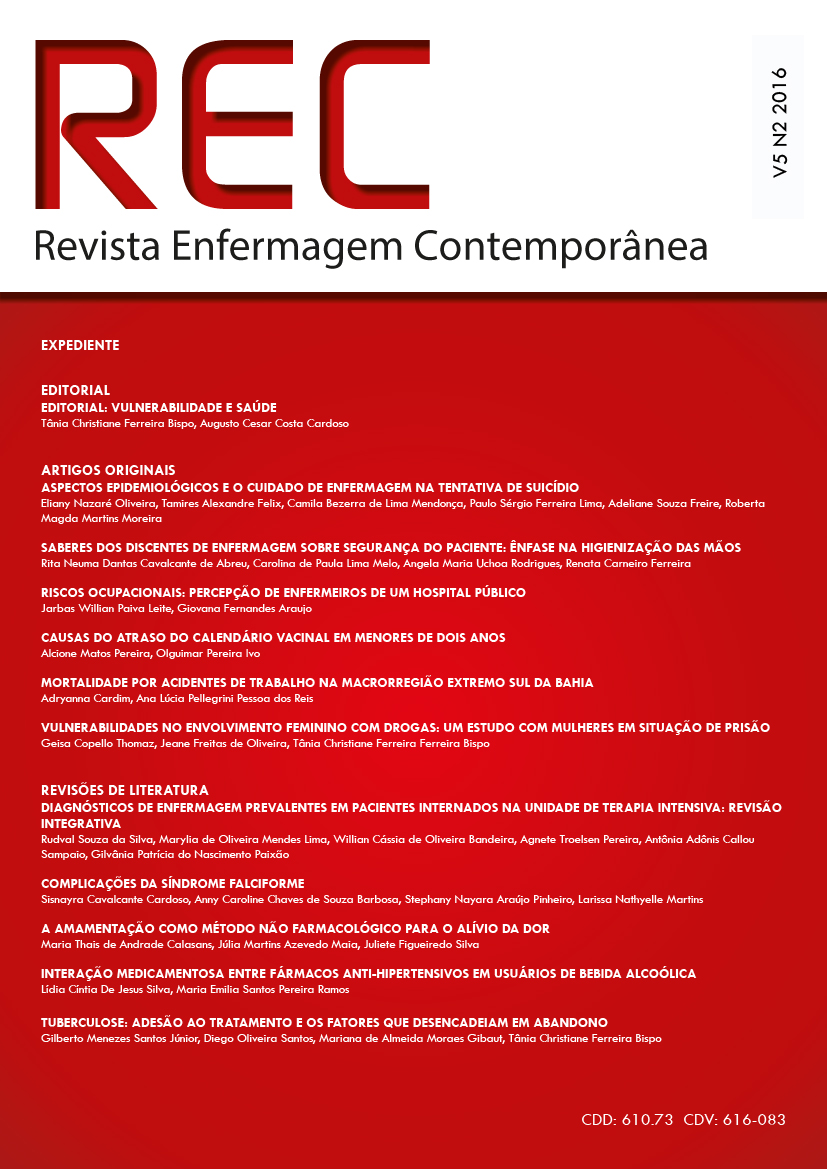COMPLICATIONS OF SICKLE CELL SYNDROME
DOI:
https://doi.org/10.17267/2317-3378rec.v5i2.1030Keywords:
Síndrome falcêmica, complicações da criança ao adulto, profissionais de saúde.Abstract
The present integrative review article discusses and highlights the main complications of sickle cell anemia in children and adults. The Sickle Cell Syndrome is an important genetic hemoglobinopathy, with a peculiar pathology resulting in the production of red blood cells with sickle cell deformities, which causes complications such as gallstones, pain crisis, the splenic sequestration crisis, stroke, ischemic stroke, ocular and retinal changes.Objective: To emphasize the major complications of sickle cell anaemia in children and adults helping health professionals in patient care. Study Methodology: internet articles were searched in (BVS) Virtual Health Library, employing the following descriptors: Sickle cell anaemia AND complications, sickle cell disease, sickle cell disease and complications. 7,544 articles related to complications of sickle cell anaemia were surveyed, in which 11 are addressed in this work in light of the instructions from the Hematology Manual, by Nelson Hamerschlak, and the article on management of acute complications of sickle cell disease by Brunetta et al. Results: Complications that predominated in children in this study was the obstructive adenoid tonsil hypertrophy, affecting over 55% in the samples of the studies and in adolescents and adults the eye changes were found in more than 73 % of the patients. Conclusion: sickle cell disease is little discussed and highly prevalent in Brazil due to miscegenation, this study highlights the main complications caused by the disease, , which health professionals should be aware of so that there is proper treatment and information provided to parents or guardians. The caregiver must have attention to such consequences of sickle cell disease in adults as well.



